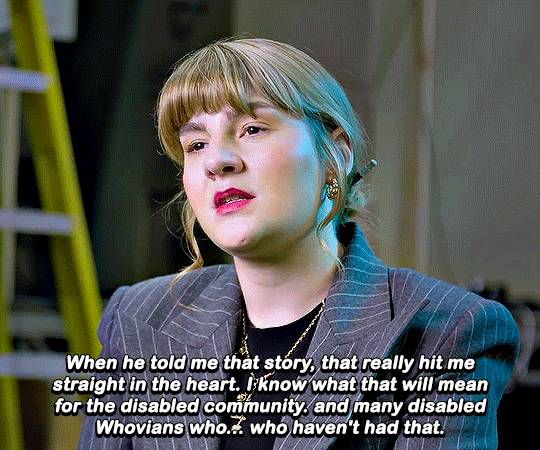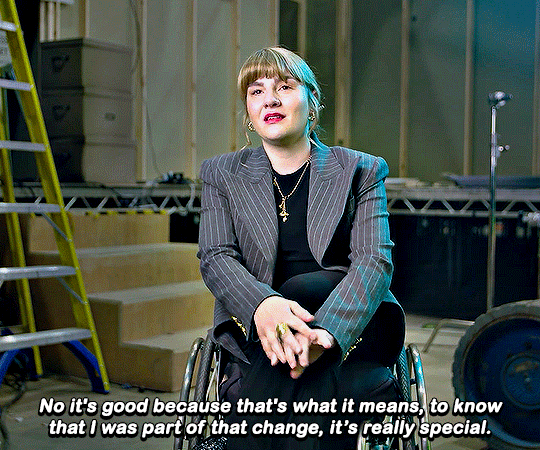Note
Okay, so in reading this, The Far Roofs is the exact game I need for my table that I never knew I needed for my table. Mint rocks.
Do you have any games that involve urban fantasy with less focus on fighting than something like Dresden or Shadowrun?
THEME: Urban Fantasy (Minimal Fighting)
Hello there! What I've got here is quite a mix, I wasn't sure how much violence you wanted (or didn't want) so I have a little bit of romance, a little bit of nostalgia, and a little bit of horror!


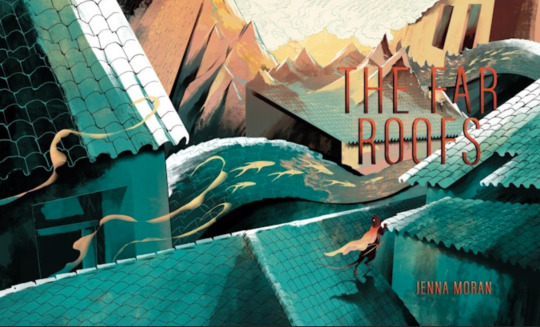

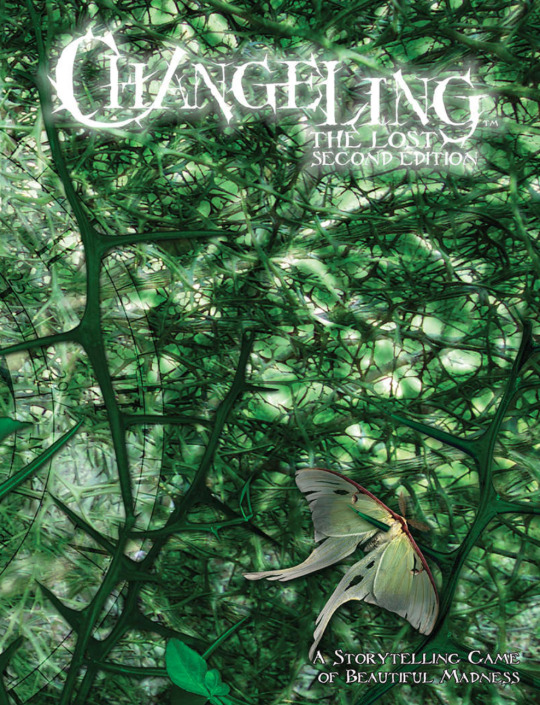

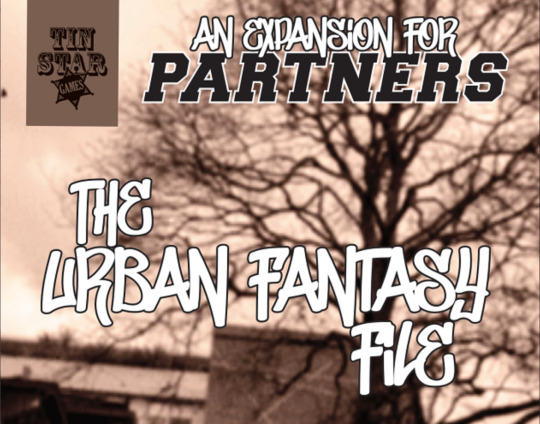

City of Mist, by Son of Oak Games.
City of Mist is a role-playing game of film-noir investigation and super-powered action. It is set in a modern metropolis rife with crime, conspiracies, and mysteries. The protagonists are Rifts, ordinary people who became the living embodiment of a legend, their Mythos. While your Rifts may seek to strike a balance between the mysterious nature of their Mythos and their mortal aspirations, the powers within them always threaten to tear their lives apart. They have unwittingly become a part of a secret world of clashing stories, and soon other legends will come looking for them with demands.
City of Mist is a combination of PbtA and FATE, giving your characters descriptive tags to use for both their benefit and their detriment as they go about solving mysteries in a supernaturally-saturated city. The primary theme of the game is mystery, and thus more than anything your characters will be primed for investigation. That’s not to say that there isn’t violence - but violence and fighting can be de-emphasized if the group is more interested in the mystery side of things.
Character Creation involves a combination of mundane and supernatural themes, as your character is endeavouring to strike a balance with the parts of themselves that they recognize (student, parent, office worker, ex-partner) and the parts of themselves that are hard to understand (mythical beast, deity, folktale, urban legend). What’s important to define is your daily routine, your personality, and what kind of supernatural powers you have.
This game isn’t explicitly anti-violent, but it absolutely provides you with ways to solve problems that aren’t violent, so I think City of Mist is worth checking out.
Scary Monsters & Nice Sprites, by Pammu.
Scary Monsters and Nice Sprites is a narrative RPG about spending your night in one of the only clubs in your city that’s safe for creatures of the night like yourself. All you want to do is have some fun just like the humans do. Play a supernatural creature of choice, put some sick EDM on the speakers and get your game on!
This game works best for an even number of players, up to 6, and is GM-less. It combines urban monsters with flirting, dark clubs and hookups. Each of your characters will look for a partner by doing things that will appeal to the other players. If they like what you do, they’ll reward you with tokens, which you can spend to improve the atmosphere of the club. Fill another player’s intimacy meter, you’ve won them over, and the two of you decide how the night ends for both of your characters.
If you want a game about flirting and the magic of a nightclub, this is your game.
The Far Roofs, by Jenna Katerin Moran.
The Far Roofs is an original role playing system and bundled campaign using pens or pencils, paper, six-sided dice, ten-sided dice, playing cards, and a bag of letter tiles. It's complete in one volume: with this one book and the equipment above, you'll have everything you need to play.
As the story progresses, your characters will gain access to over 150 unique, narrative-focused powers developed and refined over the course of a decade for the Chuubo's Marvelous Wish-Granting Engine RPG before being simplified and adapted for use herein.
The Far Roofs is still being Kickstarted, but Moran’s work on Chuubo’s Wish-Granting Engine produced a game that emphasizes wonder and emotional experience. The Far Roofs looks to deliver along the same lines, and the examples of play point towards investigation, social interaction, and magic powers. Jenna Moran is also known for her unique and evocative storytelling in her work, so I think it’s definitely worth checking out.
Lighthearted, by Kurt & Kate Potts.
Welcome to the magical 80s dream world of Lighthearted. You are a Prep, Jock, Geek, Rebel, or Outcast, like those kids in The Breakfast Club, except you are just about to start magic community college. Through play, we'll explore how you grow out of your high school cliques all while dealing with magical mishaps, college parties, vampires, and worse—finals!
Lighthearted is a complete tabletop roleplaying game that uses the language of film and television to reimagine the coming of age stories popular in 80s teen movies like Weird Science and Sixteen Candles, but with a modern fantasy spin. It's set in an alternate 1980s with fantasy elements weaved into the most outlandish bits of 80’s pop culture. There are fantasy religions mixed in with mall culture, dark magic cold wars, and magical glamours instead of plastic surgery.
This is a game of magic and coming-of-age, as you play first-year students at a magical community college. You’re off to the big city, and the big world - will you survive your first college party? Your first vampire?
The whole game feels like the neon lights of a vibrant night-life combined with the nostalgia of an 80’s film. Your magic is attached to how you feel, so as your emotions change, so will your effectiveness at certain actions. If you want a game that’s as light as its name, and you are seeking out rosy-tinted nostalgia, this might be your game.
Changeling: the Lost, by Onyx Path.
Once upon a time, they took you from your home. They promised you a place at their side, and meaning in your life, and they surrounded you with beautiful things. But the beautiful things were oh so sharp, and they laughed when you bled.
Day by day, they changed you. But day by day, your will grew stronger. On the last day, you smashed your way through the beautiful things and ran, not noticing as you bled or feeling as you cried.
You fought with courage and cleverness and took yourself home. Now the beauty and the horror are yours, to have and to hold and to live.
Welcome to once upon right fucking now.
So I’m familiar only with the 1st edition of Changeling, but as far as I understand, the setting and core premise of the game is the same in the 2nd edition. Changeling: the Lost is a game of fairy trauma. Your characters are survivors of a fae horrorscape, a place both wondrous and terrifying all at once. This game is solidly in the horror genre, but it contains within it a taste of the magical, and it’s also the reason I got into roleplaying in the first place.
As in many Chronicles of Darkness games, fighting is an option in here, but it’s not a wise option. Getting into fights pulls at your characters’ ability to understand the difference between our world and the world of Fae, it’s very easy to sustain supernatural damage that is hard to heal, and, well, sometimes it’s hard to tell who your real enemies are in the first place.
I’d say that Changeling is more of a political game than anything else. Your characters will have to dance through the highly literal wording of faerie pledges, and untangle difficult relationships between Courts that are both safe havens and potential beds of sedition. This is a violent game, but much of the violence possible in Changeling isn’t physical - it's emotional.
This Night On The Rooftops, by C.M. Ruebsaat.
This is a game about gazing out over the smokestacks after dark, with the wind in your hair and a friend at your side and a thousand lights of progress on the streets below.
This Night on the Rooftops is a collaborative storytelling game for 2-5 players about friendship, growing up, and revolution. You will play members of a gang of children in The City, a fantastic world of industry and dying magic, where witches labour alongside factory-workers to make ends meet.
This game looks slightly less modern, but it takes the fantasy aspect of witchcraft and places it inside an industrial city. The game uses a modified version of the No Dice No Masters rule set, which is excellent for stories that have an ebb and flow to them, managed through the use of token expenditure. This game is also GM-less, giving everyone at the table the same amount of control over what happens next.
Since the characters are a gang of teenage witches looking to make ends meet, this game doesn’t strike me as one that prioritizes fighting or violence. The city looks big enough to grind up the characters if they’re not careful, so they’ll likely have to find solutions to problems that don’t get them (or their dependants) in trouble. If the game is like other No Dice No Masters games that I’m familiar with, the group will also have a big say over which elements of the city are the most intriguing to them.
Partners: The Urban Fantasy File, by Tin Star Games.
Some murders are just elf defence…
Vampires are real, magic is real, elves are real - and murder is still very very real. This expansion takes you and your Partner down the moonlit streets of urban fantasy, where the dead sometimes get back up again but crime is still a mystery needing two heads to solve.
The base game for this, Partners, is a two-player mystery-solving game about a pair of detectives, a straight-shooter and a wildcard. You’ll need the base rules to play, but this supplement brings in dead elves, suspicious vampires, and other common characters in any urban fantasy genre. It can work as a one-shot, or as a series of episodes. If you want a game that's primarily about solving a mystery more than anything else, this is is for you.
Solacebound, by Sascha Moore.
Young monsters played at the boundary between the worlds. They slipped and stranded in a human city. Isolated and unwelcome, they search for each others help and a way back.
Solacebound is a GM-less Game for 3-5 people to play over a few hours. Search a sprawling, oppressive city for your friends, find out who is willing to give you a roof, bash back against authorities, cook together and console each other. Will you find a way back home before all passages close?
You are teenage monsters trying to find their way through an urban environment, in a place that is hostile to them. You survive by hiding out, finding each-other, and do things together to make sure you keep each-other healthy. Cards from a deck act as resources, but also as an oracle to help you describe the fallout of any given action, and the emotions that are attached to it. This is a game about metaphors, about what it is like to live in a place that fears you, so I definitely recommend making sure the entire table knows what this is about before starting a game.
You Might Also Want to Check Out
Subway Runners, by Gem Room Games.
183 notes
·
View notes
Note
Do you have any games that involve urban fantasy with less focus on fighting than something like Dresden or Shadowrun?
THEME: Urban Fantasy (Minimal Fighting)
Hello there! What I've got here is quite a mix, I wasn't sure how much violence you wanted (or didn't want) so I have a little bit of romance, a little bit of nostalgia, and a little bit of horror!








City of Mist, by Son of Oak Games.
City of Mist is a role-playing game of film-noir investigation and super-powered action. It is set in a modern metropolis rife with crime, conspiracies, and mysteries. The protagonists are Rifts, ordinary people who became the living embodiment of a legend, their Mythos. While your Rifts may seek to strike a balance between the mysterious nature of their Mythos and their mortal aspirations, the powers within them always threaten to tear their lives apart. They have unwittingly become a part of a secret world of clashing stories, and soon other legends will come looking for them with demands.
City of Mist is a combination of PbtA and FATE, giving your characters descriptive tags to use for both their benefit and their detriment as they go about solving mysteries in a supernaturally-saturated city. The primary theme of the game is mystery, and thus more than anything your characters will be primed for investigation. That’s not to say that there isn’t violence - but violence and fighting can be de-emphasized if the group is more interested in the mystery side of things.
Character Creation involves a combination of mundane and supernatural themes, as your character is endeavouring to strike a balance with the parts of themselves that they recognize (student, parent, office worker, ex-partner) and the parts of themselves that are hard to understand (mythical beast, deity, folktale, urban legend). What’s important to define is your daily routine, your personality, and what kind of supernatural powers you have.
This game isn’t explicitly anti-violent, but it absolutely provides you with ways to solve problems that aren’t violent, so I think City of Mist is worth checking out.
Scary Monsters & Nice Sprites, by Pammu.
Scary Monsters and Nice Sprites is a narrative RPG about spending your night in one of the only clubs in your city that’s safe for creatures of the night like yourself. All you want to do is have some fun just like the humans do. Play a supernatural creature of choice, put some sick EDM on the speakers and get your game on!
This game works best for an even number of players, up to 6, and is GM-less. It combines urban monsters with flirting, dark clubs and hookups. Each of your characters will look for a partner by doing things that will appeal to the other players. If they like what you do, they’ll reward you with tokens, which you can spend to improve the atmosphere of the club. Fill another player’s intimacy meter, you’ve won them over, and the two of you decide how the night ends for both of your characters.
If you want a game about flirting and the magic of a nightclub, this is your game.
The Far Roofs, by Jenna Katerin Moran.
The Far Roofs is an original role playing system and bundled campaign using pens or pencils, paper, six-sided dice, ten-sided dice, playing cards, and a bag of letter tiles. It's complete in one volume: with this one book and the equipment above, you'll have everything you need to play.
As the story progresses, your characters will gain access to over 150 unique, narrative-focused powers developed and refined over the course of a decade for the Chuubo's Marvelous Wish-Granting Engine RPG before being simplified and adapted for use herein.
The Far Roofs is still being Kickstarted, but Moran’s work on Chuubo’s Wish-Granting Engine produced a game that emphasizes wonder and emotional experience. The Far Roofs looks to deliver along the same lines, and the examples of play point towards investigation, social interaction, and magic powers. Jenna Moran is also known for her unique and evocative storytelling in her work, so I think it’s definitely worth checking out.
Lighthearted, by Kurt & Kate Potts.
Welcome to the magical 80s dream world of Lighthearted. You are a Prep, Jock, Geek, Rebel, or Outcast, like those kids in The Breakfast Club, except you are just about to start magic community college. Through play, we'll explore how you grow out of your high school cliques all while dealing with magical mishaps, college parties, vampires, and worse—finals!
Lighthearted is a complete tabletop roleplaying game that uses the language of film and television to reimagine the coming of age stories popular in 80s teen movies like Weird Science and Sixteen Candles, but with a modern fantasy spin. It's set in an alternate 1980s with fantasy elements weaved into the most outlandish bits of 80’s pop culture. There are fantasy religions mixed in with mall culture, dark magic cold wars, and magical glamours instead of plastic surgery.
This is a game of magic and coming-of-age, as you play first-year students at a magical community college. You’re off to the big city, and the big world - will you survive your first college party? Your first vampire?
The whole game feels like the neon lights of a vibrant night-life combined with the nostalgia of an 80’s film. Your magic is attached to how you feel, so as your emotions change, so will your effectiveness at certain actions. If you want a game that’s as light as its name, and you are seeking out rosy-tinted nostalgia, this might be your game.
Changeling: the Lost, by Onyx Path.
Once upon a time, they took you from your home. They promised you a place at their side, and meaning in your life, and they surrounded you with beautiful things. But the beautiful things were oh so sharp, and they laughed when you bled.
Day by day, they changed you. But day by day, your will grew stronger. On the last day, you smashed your way through the beautiful things and ran, not noticing as you bled or feeling as you cried.
You fought with courage and cleverness and took yourself home. Now the beauty and the horror are yours, to have and to hold and to live.
Welcome to once upon right fucking now.
So I’m familiar only with the 1st edition of Changeling, but as far as I understand, the setting and core premise of the game is the same in the 2nd edition. Changeling: the Lost is a game of fairy trauma. Your characters are survivors of a fae horrorscape, a place both wondrous and terrifying all at once. This game is solidly in the horror genre, but it contains within it a taste of the magical, and it’s also the reason I got into roleplaying in the first place.
As in many Chronicles of Darkness games, fighting is an option in here, but it’s not a wise option. Getting into fights pulls at your characters’ ability to understand the difference between our world and the world of Fae, it’s very easy to sustain supernatural damage that is hard to heal, and, well, sometimes it’s hard to tell who your real enemies are in the first place.
I’d say that Changeling is more of a political game than anything else. Your characters will have to dance through the highly literal wording of faerie pledges, and untangle difficult relationships between Courts that are both safe havens and potential beds of sedition. This is a violent game, but much of the violence possible in Changeling isn’t physical - it's emotional.
This Night On The Rooftops, by C.M. Ruebsaat.
This is a game about gazing out over the smokestacks after dark, with the wind in your hair and a friend at your side and a thousand lights of progress on the streets below.
This Night on the Rooftops is a collaborative storytelling game for 2-5 players about friendship, growing up, and revolution. You will play members of a gang of children in The City, a fantastic world of industry and dying magic, where witches labour alongside factory-workers to make ends meet.
This game looks slightly less modern, but it takes the fantasy aspect of witchcraft and places it inside an industrial city. The game uses a modified version of the No Dice No Masters rule set, which is excellent for stories that have an ebb and flow to them, managed through the use of token expenditure. This game is also GM-less, giving everyone at the table the same amount of control over what happens next.
Since the characters are a gang of teenage witches looking to make ends meet, this game doesn’t strike me as one that prioritizes fighting or violence. The city looks big enough to grind up the characters if they’re not careful, so they’ll likely have to find solutions to problems that don’t get them (or their dependants) in trouble. If the game is like other No Dice No Masters games that I’m familiar with, the group will also have a big say over which elements of the city are the most intriguing to them.
Partners: The Urban Fantasy File, by Tin Star Games.
Some murders are just elf defence…
Vampires are real, magic is real, elves are real - and murder is still very very real. This expansion takes you and your Partner down the moonlit streets of urban fantasy, where the dead sometimes get back up again but crime is still a mystery needing two heads to solve.
The base game for this, Partners, is a two-player mystery-solving game about a pair of detectives, a straight-shooter and a wildcard. You’ll need the base rules to play, but this supplement brings in dead elves, suspicious vampires, and other common characters in any urban fantasy genre. It can work as a one-shot, or as a series of episodes. If you want a game that's primarily about solving a mystery more than anything else, this is is for you.
Solacebound, by Sascha Moore.
Young monsters played at the boundary between the worlds. They slipped and stranded in a human city. Isolated and unwelcome, they search for each others help and a way back.
Solacebound is a GM-less Game for 3-5 people to play over a few hours. Search a sprawling, oppressive city for your friends, find out who is willing to give you a roof, bash back against authorities, cook together and console each other. Will you find a way back home before all passages close?
You are teenage monsters trying to find their way through an urban environment, in a place that is hostile to them. You survive by hiding out, finding each-other, and do things together to make sure you keep each-other healthy. Cards from a deck act as resources, but also as an oracle to help you describe the fallout of any given action, and the emotions that are attached to it. This is a game about metaphors, about what it is like to live in a place that fears you, so I definitely recommend making sure the entire table knows what this is about before starting a game.
You Might Also Want to Check Out
Subway Runners, by Gem Room Games.
183 notes
·
View notes
Text
I've been working on adding some information to my website about Pathfinder Second Edition monsters.
I really love what Keith Ammann has done with The Monsters Know What They're Doing and what James Holloway does with Monster Man.
These posts are me taking Pathfinder 2 Stat blocks, either from just flipping through the bestiary, or from my own session prep, and thinking through how those stats suggest they are best used.
1 note
·
View note
Text
This one is one of my favorite kickstarter projects I ever backed. Create an isolated civilization with its own lingo. Then let it die. Great for language geeks and also people who want a super melancholy game.
Have you played DIALECT : A Game About Language And How It Dies ?
By Hakan Seyalioglu and Kathryn Hymes,

A game about a small community isolated from the rest that slowly builds its own version of their language until it fades away or is destroyed. Beautiful and gut wrenching.
282 notes
·
View notes
Text
The thing with the Mari Lwyd, though, is that it's being... I don't know, 'appropriated' is the wrong word, but certainly turned into something it isn't.
Thing is, this is a folk tradition in the Welsh language, and that's the most important aspect of it. I feel partly responsible for this, because I accidentally became a bit of an expert on the topic of the Mari Lwyd in a post that escaped Tumblr containment, and I clearly didn't stress it strongly enough there (in my defence, I wrote that post for ten likes and some attention); but this is a Welsh language tradition, conducted in Welsh, using Welsh language poetic forms that are older than the entire English language, and also a very specific sung melody (with a very specific first verse; that's Cân y Fari). It is not actually a 'rap battle'. It's not a recited poem. It is not any old rhyme scheme however you want.
It is not in English.
Given the extensive and frankly ongoing attempts by England to wipe out Welsh, and its attendant cultural traditions, the Mari is being revived across Wales as an act of linguistic-cultural defiance. She's a symbol of Welsh language culture, specifically; an icon to remind that we are a distinct people, with our own culture and traditions, and in spite of everyone and everything, we're still here. Separating her from that by removing the Welsh is, to put it mildly, wildly disrespectful.
...but it IS what I'm increasingly seeing, both online and in real world Mari Lwyd festivals. She's gained enormous pop-culture popularity in recent years, which is fantastic; but she's also been reduced from the tradition to just an aesthetic now.
So many people are talking/drawing about her as though she's a cryptid or a mythological figure, rather than the folk practice of shoving a skull on a stick and pretending to be a naughty horse for cheese and drunken larks. And I get it! It's an intriguing visual! Some of the artwork is great! But this is not what she is. She's not a Krampus equivalent for your Dark Christmas aesthetic.
I see people writing their own version of the pwnco (though never called the pwnco; almost always called some variant on 'Mari Lwyd rap battle'), and as fun as these are, they are never even written in the meter and poetic rules of Cân y Fari, much less in Welsh, and they never conclude with the promise to behave before letting the Mari into the house. The pwnco is the central part to the tradition; this is the Welsh language part, the bit that's important and matters.
Mari Lwyd festivals are increasingly just English wassail festivals with a Mari or two present. The Swansea one last weekend didn't even include a Mari trying to break into a building (insert Shrek meme); there was no pwnco at all. Even in the Chepstow ones, they didn't do actual Cân y Fari; just a couple of recited verses. Instead, the Maris are just an aesthetic, a way to make it look a bit more Welsh, without having to commit to the unfashionable inconvenience of actually including Welsh.
And I don't really know what the answers are to these. I can tell you what I'd like - I'd like art to include the Welsh somewhere, maybe incorporating the first line of Cân y Fari like this one did, to keep it connected to the actual Welsh tradition (or other Welsh, if other phrases are preferred). I'd like people who want to write their version of the pwnco to respect the actual tradition of it by using Cân y Fari's meter and rhyme scheme, finishing with the promise to behave, and actually calling it the pwnco rather than a rap battle (and preferably in Welsh, though I do understand that's not always possible lol). I'd like to see the festivals actually observe the tradition, and include a link on the booking website to an audio clip of Cân y Fari and the words to the first verse, so attendees who want to can learn it ahead of time. I don't know how feasible any of that is, of course! But that's what I'd like to see.
I don't know. This is rambly. But it's something I've been thinking about - and increasingly nettled by - for a while. There's was something so affirming and wonderful at first about seeing the Mari's climb into international recognition, but it's very much turned to dismay by now, because she's important to my endangered culture and yet that's the part that everyone apparently wants to drop for being too awkward and ruining the aesthetic. It's very frustrating.
10K notes
·
View notes
Text
I was meeting a client at a famous museum’s lounge for lunch (fancy, I know) and had an hour to kill afterwards so I joined the first random docent tour I could find. The woman who took us around was a great-grandmother from the Bronx “back when that was nothing to brag about” and she was doing a talk on alternative mediums within art.
What I thought that meant: telling us about unique sculpture materials and paint mixtures.
What that actually meant: an 84yo woman gingerly holding a beautifully beaded and embroidered dress (apparently from Ukraine and at least 200 years old) and, with tears in her eyes, showing how each individual thread was spun by hand and weaved into place on a cottage floor loom, with bright blue silk embroidery thread and hand-blown beads intricately piercing the work of other labor for days upon days, as the labor of a dozen talented people came together to make something so beautiful for a village girl’s wedding day.
What it also meant: in 1948, a young girl lived in a cramped tenement-like third floor apartment in Manhattan, with a father who had just joined them after not having been allowed to escape through Poland with his pregnant wife nine years earlier. She sits in her father’s lap and watches with wide, quiet eyes as her mother’s deft hands fly across fabric with bright blue silk thread (echoing hands from over a century years earlier). Thread that her mother had salvaged from white embroidery scraps at the tailor’s shop where she worked and spent the last few days carefully dying in the kitchen sink and drying on the roof.
The dress is in the traditional Hungarian fashion and is folded across her mother’s lap: her mother doesn’t had a pattern, but she doesn’t need one to make her daughter’s dress for the fifth grade dance. The dress would end up differing significantly from the pure white, petticoated first communion dresses worn by her daughter’s majority-Catholic classmates, but the young girl would love it all the more for its uniqueness and bright blue thread.
And now, that same young girl (and maybe also the villager from 19th century Ukraine) stands in front of us, trying not to clutch the old fabric too hard as her voice shakes with the emotion of all the love and humanity that is poured into the labor of art. The village girl and the girl in the Bronx were very different people: different centuries, different religions, different ages, and different continents. But the love in the stitches and beads on their dresses was the same. And she tells us that when we look at the labor of art, we don’t just see the work to create that piece - we see the labor of our own creations and the creations of others for us, and the value in something so seemingly frivolous.
But, maybe more importantly, she says that we only admire this piece in a museum because it happened to survive the love of the wearer and those who owned it afterwards, but there have been quite literally billions of small, quiet works of art in billions of small, quiet homes all over the world, for millennia. That your grandmother’s quilt is used as a picnic blanket just as Van Gogh’s works hung in his poor friends’ hallways. That your father’s hand-painted model plane sets are displayed in your parents’ livingroom as Grecian vases are displayed in museums. That your older sister’s engineering drawings in a steady, fine-lined hand are akin to Da Vinci’s scribbles of flying machines.
I don’t think there’s any dramatic conclusions to be drawn from these thoughts - they’ve been echoed by thousands of other people across the centuries. However, if you ever feel bad for spending all of your time sewing, knitting, drawing, building lego sets, or whatever else - especially if you feel like you have to somehow monetize or show off your work online to justify your labor - please know that there’s an 84yo museum docent in the Bronx who would cry simply at the thought of you spending so much effort to quietly create something that’s beautiful to you.
26K notes
·
View notes
Text
Voting for Democrats is the "leaving the house, getting some exercise, and drinking more water is good for your mental health" of societal change. Everyone keeps telling you to do it, worst of all your mom keeps telling you to do it, and it's not a magical cure-all, but it actually works and rotting in your room shitposting does not help in either scenario.
31K notes
·
View notes
Text
If you've never played a TTRPG with tweens, you're missing out.
These kids are clever and creative and funny (sometimes in unintentional ways).
They're old enough to grasp complex rules but young enough to not care enough to be rules lawyers (mostly).
They still believe that adventure is just around the corner in their real lives. They love the freedom of making their own choices in a game, but they're still learning how to be a team player.
They break out in song randomly. Or start wrestling each other irl.
They latch onto details you didn't think mattered—and in their own way, that adult groups don't.
They'll make silly and immature decisions because they are silly and immature, in the best way, just like they should be!
They're willing to take risks that adult players often avoid, and when the GM rewards those risks, they are so wonderfully proud of themselves.
They don't mind consequences for bad choices, provided you make it fun.
They speak up when they don't like something (including consequences for bad choices), and they're creative collaborators to find a better a solution.
But most of all, tweens deserve a place where an adult treats them like they're a little more grown-up than they are. Where it's safe for them to try new things (even things like swearing under their breath) without being immediately corrected or squeezed into a box that doesn't feel quite right.
They deserve the chance to discover what it means to be people who care about others, who feel compassion, who recognize dignity in creatures not like themselves (whether that's smelly boys or giggling girls or a geriatric robot who stutters).
They deserve space to practice being human. And TTRPGs can be a beautiful way to give them that space.
Tweens are incredible, creative, valuable humans. Playing TTRPGs with them will make you better, more willing to laugh at yourself, and more aware of the brilliance within those kids you only thought you knew before.
168 notes
·
View notes
Photo
When I was in college at UW, there was this little Russian Cafe in one of the side buildings at the Pike Place Market run by a couple and one of their mothers. The food was so great. And as a bonus, I could practice my Russian, especially the polite stuff that I didn't use with my friends in the Linguistics program.
Extra Bonus: the family so loved that I was making an attempt to learn and use their language that I always ended up with free "here, try this too" items on my order.

276K notes
·
View notes
Text
This sounds real interesting, I've already subscribed myself to it.
For our pilot episode, we (re)read Sleepaway by Jay Dragon (@jdragsky). “A game of horror, dreams, and summer camp”, Sleepaway sets an intense, stomach-churning tone just with the text alone.
You can find "Sleepaway" on Possum Creek Games' itch[dot]io linked here.
57 notes
·
View notes
Text
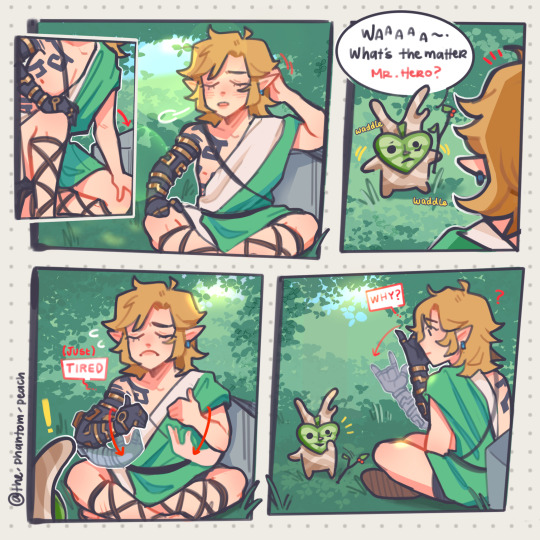
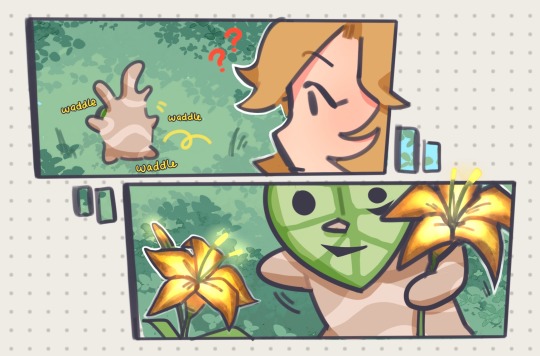
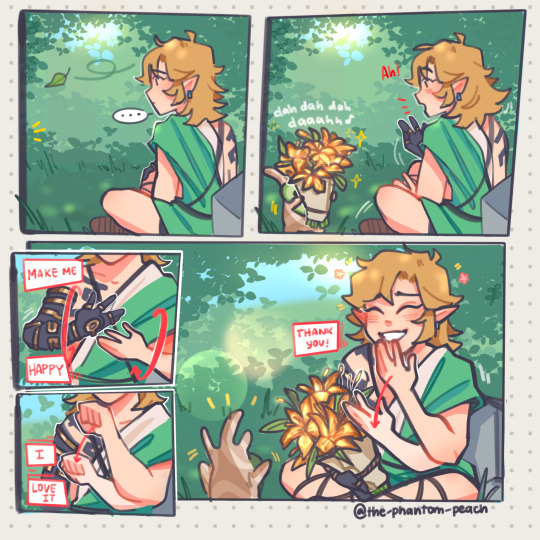
🗣️ huh?? what do you mean I haven’t posted any Link signing propaganda yet??
43K notes
·
View notes
Text
Mausritter last night, and since this blog is rapidly becoming my campaign diary, I figure I should get the details down just in case anyone is enjoying reading along.
In bullet points first, then details and lessons learned beneath the break.
Flew from Fox Cross to Swamp Farm on pigeon back
Recruited a warband
Began the process of rebuilding the Scarecrow
Tasked with collecting lichen from the Face Oak for a curse on the City Rat general
Met with the Queen of Big Stump; Knighted?
Exchange riddles with Bzz-Thwip and the Cicada Fey
Granted audience with the Face Oak and asked to plant a Face Oak acorn in exchange for curse lichen
Made camp safely beyond the fairy ring
Survived an ambush by a tiger centipede
Last night was a set-up for the big set piece where we save the patch from the marauding City Rat raiders under Cluny Cleftjaw. We rode on Pigeon-back from Fox across to Swamp Farm, a journey that would’ve taken the day but instead took just under an hour. There’s a reason a flight in the book puts a price per hex for flight at 200 pips, after all. We got to meet Francisco, the Fox Cross Pigeonspeaker and made friends with his fine feathered partner “Crrlprr.” Yeah, that’s pronounced with all the r’s rolled. Best of luck.
We flew back down to Swamp Farm to talk to meet up with our protege Tam, with the side objective of levying some help with the incoming horde from the good folk of Swamp Farm. Which means we’ll have to meet with the Speaker-For-Ghosts. When we first met her she was a wizened old crone of a mouse, but following a ritual which we were assured would keep the Ghost Owl at bay for another generation, the years bled from her before our eyes as her consort, a mouse referred to only as the Elder, grew progressively more crabbed and feeble. She now appears in the flower of her youth once more, and dotes on the Elder like a particularly soft-hearted daughter. She does know Cluny by reputation, and Tam, sleeping in the Stoneskip Inn, has already brought news of his coming. After some questions to ascertain our objectives—and an out of character discussion to nail those down (always handy)— she pledges 15 hardy swamp mice to our cause. That’s almost a warband!
War bands are cool. If you mean to fight something huge, the kind of thing that a mouse would have a big problem fighting alone or in a small group— foxes, big snakes, cats— you can hire mice at arms and get yourself a unit that functions at that scale. Teamwork, rather than pure size will do the job, but typically hiring a warband is not a cheap endeavor. We’ve got retainers that believe in our cause. So long as we’re making forward progress on that cause, they follow us. Their captain, Marrow, is a fisher mouse who acts as the voice of their unit. A morale barometer. If the Wayfinders start straying, he’ll be the one to make it clear that the Swamp Farm irregulars expect changes or they’ll take their little reed coats and fishing tridents and go.
Bindi has been carting around the mushroom heart which animated the Scarecrow from the south field in their titanic battle with the Crows and their automaton. In the course of the battle the Scarecrow burnt, but the Waywatchers managed to save that small part in hopes of rebuilding the magical protector at a later time. Bindi’s been keeping the heart in a little straw and rag doll that she’s been referring to as “The little Fun Guy.” With some trepidation she asked the Speaker-For-Ghosts if her magic was sufficient to help make the Fun Guy strong again. The Speaker-For-Ghosts assured Bindi that she would teach the mushroom how to walk and talk, but that he was already perilously strong.
Our Waywatchers are naturally wary of magic— and at this point who could really blame them— but Bindi is a curious soul and on a whim as she set Fun Guy on the throne asked if the Speaker couldn’t just magic Cluny and his Horde away. Speaker-For-Ghosts told her that killing curses are deadly in both directions, death in for death out. But that her magic could cloud the rat-generals mind and confuse his orders, though it will require the beguiling lichens from the Face Oak to the south, behind enemy lines.
This is an ugly choice. Our Waywatchers with less than 20 mice aren’t in a position to court open conflict with the horde. Rats are nearly twice the size of mice, fierce and merciless in battle. The last time they crossed blades with the scouting party that occupied Tyreton, they nearly met their end. They decide instead to seek further reinforcements at Big Stump or, as it’s now known by the players, Min-Mouse Tirith.
Floating down the stream with their fisher mice, they are challenged by a force of salamanders and mice, bearing patchwork uniforms and the blazon of Big Stump. Mercenaries in service to the Queen of the Stump. They grant passage but a force of 20 mice bearing no banner and owing no allegiance strikes the watch captain as suspicious. The Waywatchers and their retinue are advised to present themselves at the Keep. This solves the question of how they’ll secure an audience with the leader of the settlement, though, Fennel (previously a messenger) does not recall a Queen of Big Stump.
The seneschal greets them in the courtyard and begins instructing them on royal protocol. Upon their left knees, hands over heart and heads bowed the appropriate amount, the Waywatchers are announced to the court as the great doors are drawn back.
The Queen of Big Stump is reclining on an ivory throne, clad in a mantle of weasel fur and a small crown jauntily perched over one ear. Tiger-striped, emerald eyed, we meet her lady ship, her highness, mother of the realm, called Swiftclaw, Eye Unblinking, Azura, Queen of the Stump and Regnant Lady Cat of The Southern Patch.
“Cats eat mice!” gasped Bindi, before several paws were slapped over her mouth.
Last session, we talked through some truths about Cats. All cats, as the mice of the Patch know them, are self-important and status conscious. They are, to the minds of mice, all mad. Fickle, capricious, and the sort of creatures that mice count as walking catastrophes. This moment felt very much like entering the castle to find the dragon seated upon the throne and everyone in the court just sort of okay with that.
She was complimentary. Engaged. Quick-witted. She folded her claws beneath her chin as they told their story and, warily, asked if they could count on the help and support of Big Stump in the coming battles. “We will match and match again the contribution of Swamp Farm. I will not abide Rats Our Kingdom. As beloved companions of the Realm, you may avail yourself of Our walls, on the singular condition that when the sword and spear and horn are still, first pick of plunder goes to me…as befits your liege-lord.”
Birch agrees to terms, wheeling and dealing as he does. They don’t trust her, of course. How can mouse trust cat? Marrow and his band, grumbling and unsure, are left with the royal guard to get acquainted with the units who will fight side by side with them. Now we have a proper warband, but we can’t drag them down to the Face Oak without attracting the attention of Cluny’s forces.
They set out midafternoon and lucky encounter rolls mean that they aren’t opposed until they cross the fairy ring. The toadstools are inhabited by strange cicada creatures whose pantomime attempts at communication leave the mice perplexed. Luckily the Wayfinders have a Rune of Be Understood, and using its power —though it leaves poor Fennel drained and grizzle-furred— they open the channel of communication.
They puzzle through their interlocutor’s, Bzz-Thwip’s (it does not translate), odd phraseology and cadence. They will be conducted into the presence of the Face Oak (Queen’s Face, mirror to sky and soil, eldest matchless rod of burl and bone), but not for free. After Fennel attempts to pay for passage with a shovel (bugs like to dig, right?) and gets horrified screeching as he bares iron inside the fairy ring (bones of stone ripped and wrought and not yours nor ours to wield here amid the bright effulgence viridian unspoilt, defile’t! Curse’d curse’d and thrice curse’d!), Birch offers rations and the Cicada happily accepts this as payment for guidance until sundown.
They move fast, scurrying through a familiar, and yet alien landscape. Everything seems to have the brightness turned up. Spring flowers turn their heads to mark their passage. But they get to the Face Oak, and not knowing how best to address a tree, Bindi goes with the direct approach. She shouts at it.
Now, I was expecting to tax their Rune again, but with a lucky Wisdom save, Bindi is understood by the tree who happily rearranges their Jack in the Green face into the face of a titanic mouse. We are dealing with fairies here, so clearly they must bargain. Nothing you haven’t earned by valor or guile or craft may come back through the fairy ring without consequences. Bindi asks what the tree wants and it drops a single acorn at her feet. “When you go home, find a shady spot, plant this and wait 200 years.” Ominous.
They scrape their lichen from the tree and make haste back for the fairy ring. They cross the boundary right as the sun dips below the horizon. Box-Thwip calls that fair play and devours the rations he was given on the other side of the line with terrifying crunching sounds. The Waywatchers assume it would’ve been bad to be caught on the other side of the line after sunset.
The Waywatchers search for a campsite, settling in a narrow gravel defile not far from the stream that they followed from Big Stump. It’s on first watch that the tiger centipede strikes. In about eight sessions we’ve only fought twice and both of those were nearly catastrophic. But this fight feels like better odds. I mean in theory. The centipede is four times their size, has pincers dripping with venom, and is basically a walking suit of armor, but there’s only one of them.
A lot of OSR games, contrary to games like D&D where combat is a central pillar, assume that open combat is a failure state. If you and an enemy are taking turns hacking and slashing at each other, something has gone seriously wrong and now we’re hoping that the dice fall kindly because all of our other plans have gone to shit. Mausritter is no exception. Our beefiest character has 10 HP before he starts taking critical wounds. Our least beefy can take 5. The centipede rolls a d8 damage any critical damage does 1d12 Dexterity damage. There’s a possibility that a single bite could kill a character, and there is no rolling to attack in this game. It’s the centipede’s turn; take *rolls* 7 damage. Out of hitpoints? Take *rolls* 6 dexterity damage, and now roll under your new Dex score. Didn’t roll under? Time to make a new character.
Luckily, our heroes win initiative here because the centipede rolled “curious” on its reaction roll so it wasn’t a surprise round. It was following the unfamiliar mingling scents of fairy (something that is not prey, to be avoided) and mouse (tasty noms) and was cautiously investigating. The mice spring into action. This looks a lot like two spear mice to the front while Fennel speeds arrows to cover. The fight is quick and brutal. Birch is wounded, but manages to come out with some new bleached stripes in his fur from the centipede’s venom rather than making a meal for the beast.
Overall an eventful three hour session. Our return to Big Stump is next week, and we’re loaded down with centipede chitin and what looks an awful lot like a mouse-sized lobster tail thanks to Bindi the sewer guide’s culinary acumen. We aren’t sure how our continued relationship with Azura the Cat Queen will shake down, but the enemy of my enemy, you know? At least that was the feeling around the fire. The mice in town didn’t appear distressed by their new Queen, no one was obviously acting…yknow oppressed. But a mouse is slow to trust a cat’s claws even extended in friendship.
I suppose we’ll have to wait for next week to find out.
22 notes
·
View notes
Text
My therapist just told me my problem is that I need to write more fanfiction.
119K notes
·
View notes
Note
This is all good information.
Since I started running games online, the two parents in the group don't have to make childcare arrangements as long (and "leave kid with spouse" counts as arrangements as much as a sitter) and we can include people from my old group in another state.
At some point I might organize an in person game for the right kind of game, but for now the online large group is working.
In the time since I asked for silly and/or platformer-themed games, I managed to get my friends together a grand total of once after months of one of them flaking at the last minute, and now, their schedules don't allow for all four of us to do anything together. Do you have any tips on finding people to play games with?
Hello friend.
When I first got your ask, I went down memory lane, and thought about what worked for me. I found out about ttrpgs about five years ago, and I barely knew anyone who played them. I started by just talking to folks about them and asking friends who were willing to try something new, and that got me a game or two - which was nice! But it wasn’t permanent either.
I didn’t start playing games regularly until I moved to a new place and went back to university. I put up advertisements around campus and eventually interested people showed up. We made a Discord server and now half of our games are run online, to accommodate for folks who can’t always show up in person. Some folks left, some stayed, and some invited more people. I have a pretty sizeable group of friends who show interest in a number of different games… but I don’t know how much of this information is helpful to you.
I think I was successful in finding a group for a few reasons:
I was in a place where I was meeting a lot of people and I needed to be very social in order to find a new group of friends. Many of the people I was meeting were in the same position.
I advertised. I put up posters and people who were specifically interested in what I was doing responded. I made my games low-commitment one-shots and ran them for as many people as I could. I cast a wide net so that if a few people cancelled or walked away, there were still enough folks to have a group.
I was persistent, and I was flexible. Not everyone who showed up stayed, and I had to learn a lot about what it meant to be a GM, I had to figure out how to make sure we had a way to communicate and schedule things, and I had to care. Not just about the games, but about the people who were showing up to play with me.
If you are able to find places where folks who likely have the same interests also hang out, and you’re able to talk to them and make friends, you’ll likely make connections with folks who are interested in the same hobbies as you. If in-person is not feasible, you might be able to find some discord servers or other online communities to join.
Once you have folks at the table, if you also show that you are dedicated to making sure your players' experience at the table is a good one, I think it helps ensure they'll come back.
34 notes
·
View notes
Text
publishing companies will be like ~ooh this is a hardcover oooh it's so durable that will be $35~ and then you see the actual book and it's like. "perfect"-bound with endbands glued on crooked and a completely plain paper cover under the dust jacket. my dudes this shit is a mass market paperback with delusions of grandeur
27K notes
·
View notes
Text
Reblog and put in the tags how you would die if your URL predicted your death
85K notes
·
View notes


